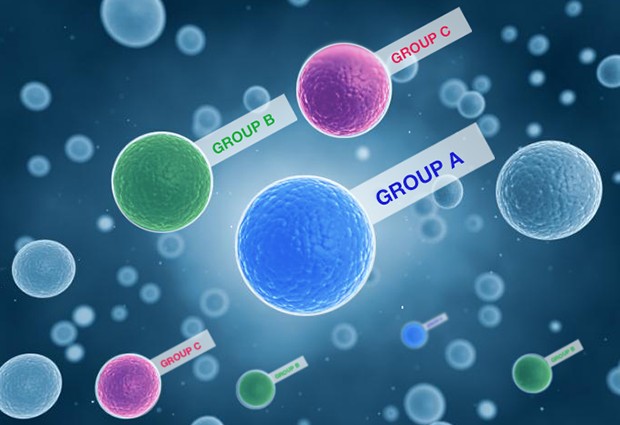
A snapshot of stem cell expression
Researchers on the Wellcome Genome Campus reveal new genes involved in stem cell pluripotency, new subpopulations of cells and new methods to find meaning in the data.

Researchers on the Wellcome Genome Campus reveal new genes involved in stem cell pluripotency, new subpopulations of cells and new methods to find meaning in the data. Published in Cell Stem Cell, the findings have implications for the study of early development.
Stem cells exist in a ‘ground’ state before something triggers them to become develop into functional cells such as liver, heart or blood cells. What sparks that change has a lot to do with how, when and in what order the genes inside that cell are expressed, or turned on and off. Characterising the gene expression at play in stem cells is essential to understanding the fundamental biology of health and disease. It can also help in detecting genetic factors that figure into a person’s response to a medicine.
Researchers at the Wellcome Trust Sanger Institute and EMBL’s European Bioinformatics Institute (EMBL-EBI) used single-cell RNA sequencing technology to study the expression of thousands of genes in around 700 mouse Embryonic Stem Cells (mESCs), and found there is a signature ‘gene expression mix’ that characterises different cell populations. They also found this mix determines the length of the cell cycle. In other words, heterogeneity in gene expression across cells underpins cellular behaviour.
It’s like taking a picture of a crowd from above and grouping individuals by clothing style to infer which party they will go onto next…
“You can take a kind of snapshot of this very dynamic process of gene expression, and infer a lot of information from it,” explains Ola Kolodziejczyk of EMBL-EBI and the Sanger Institute. “It’s a bit like taking a picture of a crowd in Times Square at New Year’s Eve from above and ordering all of the individuals by age to get a sense of their life cycle, or grouping them by clothing style to infer which party they will go onto next.”
Single-cell RNA sequencing helps researchers see what makes all the cells in our bodies take on different shapes, predict what they might do and explore the many elements that contribute to their fates. In this study, the team developed novel approaches to characterise how gene expression levels vary, stem cell by stem cell, in three different states.
“One really exciting thing was that we identified new genes involved in the stem-cell regulatory network, and validated our findings using the CRISPR technology,” says Jong Kyoung Kim of EMBL-EBI. “That brings us closer to inferring how the whole network is put together – and that in turn can give us insights into what keeps stem cells in a ground state and what triggers them to change.”
By dissecting the noisy mix of gene expression cell by cell, the researchers uncovered a rare subpopulation of cells that express a couple of marker genes also expressed by cells at the two-cell stage of the embryo, which are able to develop into any cell type (‘totipotent’). While the rare mESCs identified in this study only share some molecular features of the two-cell system, they will provide valuable resources to the study of early development.
“Our study really shows the power of single-cell transcriptomics, how it can reveal biologically relevant heterogeneity in expression that is often masked by traditional methods,” says Sarah Teichmann, group leader at both EMBL-EBI and the Sanger Institute. “It adds a whole new dimension to how we find relationships between cultured cells and natural development, which is making a big difference in genomics research.”
This post was originally published on EMBL-EBI News.


